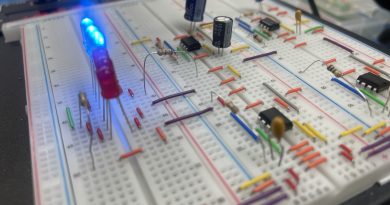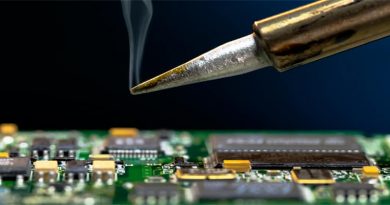SOLDERING 101 – The Basics
Soldering is required in all electronics manufacturing and repair operations. It can be applied to very small components on Printed Circuit Boards or on larger electromechanical assemblies. The techniques are similar but the soldering station, tip, and solder type may be different for each application.
The basic procedure involves applying a sufficient amount of heat the two surfaces being joined together. This could be a component lead and a PCB, or a wire lead and a metal terminal, like those found on a switch or another wire termination. The amount of heat required will be dependent on the thermal mass of the materials and the type of solder being used.
A small component lead and PCB pad will normally require less heat than a large gauge wire and a heavy terminal. However, some PCB pads may be attached to a large Ground or Power plane and therefore would require a higher amount of heat. In general the largest tip possible should be used for the soldering operation. This tip may still be quite small for a small surface-mount component.
The materials that are being soldered together must be both clean and free of contaminants. Some possible contaminants are dirt, grease, oil, rust and oxidation. If any contaminants are present they should first be removed if possible, before the soldering operation is attempted. Flux, which performs a final cleaning of the materials as the solder is applied, is normally present in the solder. Additional flux is sometimes required for difficult surfaces and when parts are being un-soldered for replacement.
To prepare the soldering iron for the soldering operation, the tip should be cleaned and tinned to provide an optimal solder joint. The soldering station temperature is adjusted to a value that is sufficient to melt the solder being used. This value must be determined experimentally for the reasons mentioned above. The hot tip is applied to the junction of both surfaces (i.e. component lead and PCB surface) and held there for several seconds before applying the solder to the junction. The junction of both surfaces must be allowed to melt the solder for an ideal solder joint. The solder should NOT be applied to the soldering iron tip to produce the connection. Excessive heat and time will damage the component and PCB, and insufficient heat and time will produce a cold solder joint.
Quality solder joints are a combination of proper technique and proper equipment and materials.
The technique is a learned process which is optimized through experience.

